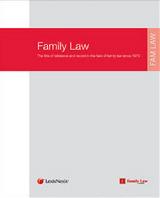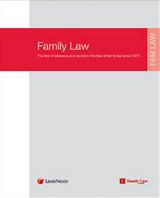- News & Comment
-
Online Shop
Online Services
Looseleafs
Law Reports
Books and eBooks
-
CPD & Events
Webinars
Events
- Authors
- About Family Law
- Contact












 25 MAR 2025
25 MAR 2025

 25 MAR 2025
25 MAR 2025

 25 MAR 2025
25 MAR 2025

 25 MAR 2025
25 MAR 2025

 25 MAR 2025
25 MAR 2025








In Re G (Residence: Same Sex Partners) [2005] 2 FLR 957, the parties had cohabited in a same-sex relationship for 8 years, during which time the respondent gave birth to two children conceived by artificial insemination by donor. Following the end of the parties' relationship, the appellant obtained leave to apply for a shared residence order in respect of the younger child. The respondent made plans towards relocating with the children and her new partner to another part of the country. She did not reveal those plans until the second day of the adjourned hearing. The judge refused the application for a joint residence order, but made a series of specific issue orders designed to ensure that the appellant retained a significant role in the lives of the children.
The Court of Appeal allowed the appeal and granted the joint residence order saying that the appellant was entitled to succeed on one or more of the grounds of appeal. Of particular relevance was the judge's failure to give sufficient importance to the fact that the respondent's plans appeared to have been designed to marginalise the appellant from the children's lives. The biological mother then defied the orders by secretly taking the children to a new home in Cornwall. When they were found, Bracewell J granted a residence order in respect of the children to her former partner. That was confirmed in April 2006 by the Court of Appeal. Lord Justice Thorpe said that the upbringing of the children had been shared and they would not distinguish between one woman and the other on the grounds of biological relationship. See May [2006] Fam Law 408 for the full news article.
Click here if you subscribe to the Family Law journal online.



